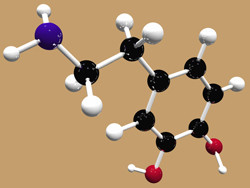Dopaminergic neurons in health and disease
Dopaminergic neurons, the nerve cells in the brain that produce dopamine, are involved in important biological processes such as movement, motivation and cognition. Their degeneration leads to a pathological condition known as Parkinson's disease. Despite extensive research, current understanding of the molecular mechanisms regulating neuronal cell death is incomplete. This hinders the development of therapeutic or preventative strategies for Parkinson's disease. The objective of the EU-funded NEURODOPA DEGEN project was to understand the molecular mechanisms of dopaminergic neurodegeneration using a Caenorhabditis elegans model. Combined with advanced genetic methodology, the project resulted in two major breakthroughs related to the development and survival of dopaminergic neurons. A first important project result was enhanced understanding of the mechanisms responsible for dopaminergic fate specification in C. elegans. The project studied the regulatory mechanisms coordinating expression of the dopamine pathway genes. Genetic screening revealed the transcription factors acting in a cooperative manner. Studies on dopaminergic neurons in the mouse olfactory bulb suggested phylogenetic conservation of dopaminergic regulatory programmes. The findings in C. elegans can be relevant for the mammalian system. The second important finding was identification of a mutant in which initial normal development of dopaminergic neurons is followed by rapid and progressive degeneration. A single amino acid substitution in a C. elegans transient receptor potential channel was responsible for the degeneration phenotype. Project findings revealed that not all dopaminergic neurons are equally sensitive to degeneration. This correlates with the selective vulnerability of dopaminergic neurons in the substantia nigra in patients with Parkinson's disease. Additionally, a number of 'suppressor' mutations, partially or fully protecting dopaminergic neurons from a specific degeneration pattern, were identified. Further studies on these mutants will advance understanding of the calcium-handling mechanisms and dopaminergic neuroprotection in general.







